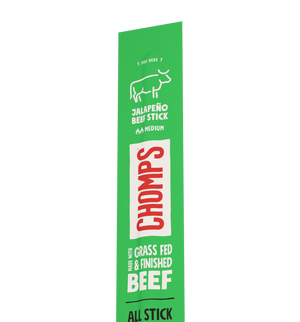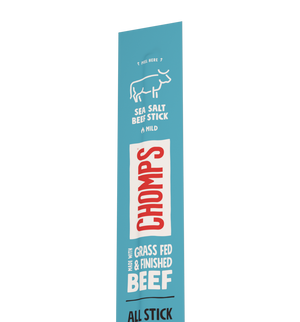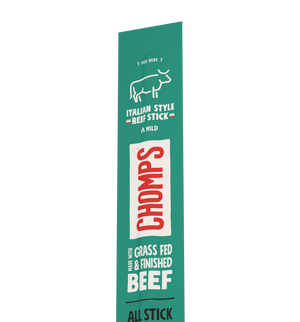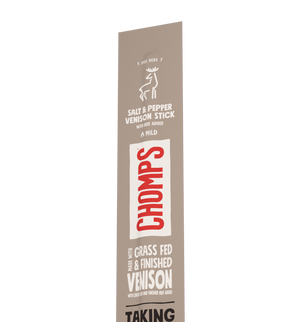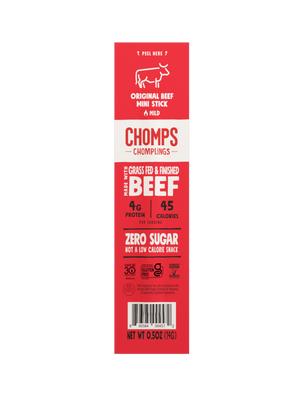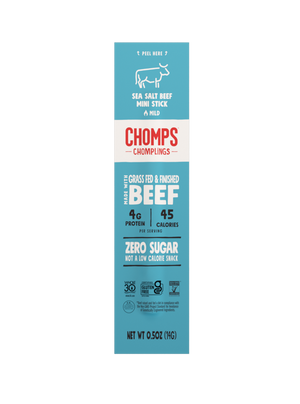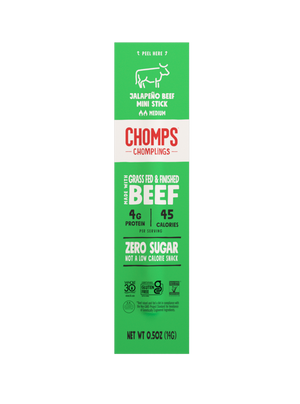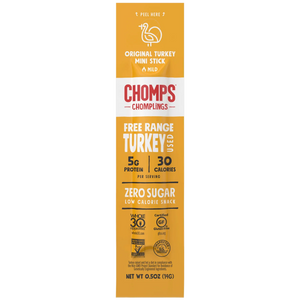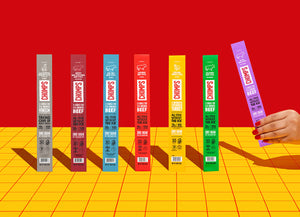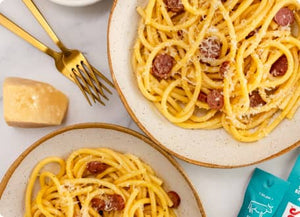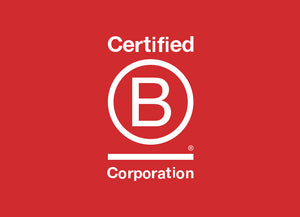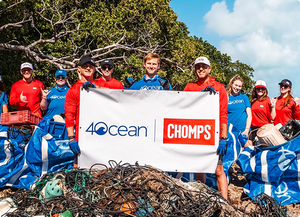Burning fat by eating fat, sounds too good to be true, right? Wrong. If you haven't been living under a rock for the past few years, chances are you've heard of the ketogenic diet.
Keto diet rules follow a low-carb, high-fat approach to eating that consists of about 75% fat, 20% protein, and 5% net carbs. Research has shown that embracing the rules of keto not only promotes fat loss but has the ability to improve certain conditions such as type 2 diabetes [1] and cognitive decline. [2]
In this article, we'll discuss:
-
What is a ketogenic diet?
-
Different types of ketogenic diets
-
Health benefits of the ketogenic diet
-
Keto rules for foods you can and can’t eat
-
A sample keto meal plan
-
Tips for eating out on a ketogenic diet
-
Helpful tips on how to start and maintain keto diet basics
WHAT IS A KETOGENIC DIET?
The ketogenic diet, also known as the keto diet, is the idea of transitioning your body from burning fat for fuel instead of carbohydrates.
So, what are keto basics that we should know? And how does the keto diet work? Let’s break it down.
The body produces two substances when carbohydrate intake is high:
-
Glucose: Glucose is the easiest molecule for the body to convert to energy. This is the reason that carbohydrate intake will negate the ability of the body to enter ketosis. If carbohydrate intake is high, the body defaults to using glucose for energy.
-
Insulin: Insulin aids in the transport of glucose around the body. When you reduce your carb intake and replace it with fat, it puts your body into a metabolic state called ketosis.
How to Put Your Body in Ketosis
Ketosis is defined as the process by which your body breaks down fatty acids to produce ketones in the liver, which can supply both the brain and body with energy. [3] Ketones come in three forms:
-
Acetoacetate (AcAc)
-
Beta-hydroxybutyric acid (BHB)
-
Acetone [4]
One of the most important keto rules for beginners to remember is that carbs must be avoided if you want to stay in ketosis. Generally, you want to stay under 25 grams of net carbs (total carbs minus fiber) per day.
Another one of the most important keto diet basic rules to keep in mind is watching your protein intake. Protein is not the enemy, as with carbs. You want protein to make up a significant part of your diet. Protein provides plenty of essential functions that are still valuable to your body’s function in ketosis. However, keep this macronutrient to only a quarter of your diet.
In ketosis, fat is king. The rest of your calories should come from fat. When you follow keto diet rules to a tee, your body will be breaking down fat for energy in the absence of carbs.
THE DIFFERENT TYPES OF KETOGENIC DIETS
When it comes to the keto diet, there are several types, allowing you to choose what is best for your lifestyle:
Standard Ketogenic Diet (SKD)
The SKD is the standard diet an individual new to the keto diet would follow if they were first starting out. This diet follows keto rules including low-carb, moderate protein and high-fat intake.
Cyclical Ketogenic Diet (CKD)
The CKD is more suited for athletes and active individuals alike who simply need the carbs to fuel their intense training sessions. The keto rules of this diet involves a period of higher-carb refeeds during the week. An example would be 5 days of following the SKD and then 2 days of high-carbs (anywhere from 400-600 grams).
Targeted Ketogenic Diet (TKD)
The TKD is also meant for more active individuals who struggle with energy during their workouts, but it's less intense compared to the CKD. The TKD follows the keto diet rules of SKD for the most part, but with an additional 25-50 grams of net carbs around your workout times (about 30 minutes pre and post-workout).
High-Protein Ketogenic Diet
The keto diet rules from this diet isn't too far off from the Standard Ketogenic Diet, however, it does include more protein. Compared to the 25% of protein included in the SKD, the high-protein ketogenic diet often includes up to 35%.
HEALTH BENEFITS OF THE KETOGENIC DIET
When it comes to the health benefits you can gain from following keto basics, the list goes on and on in both the short term and the long term. It can not only help you lose weight, but studies show that the keto diet is superior to the often recommended low-fat diet for weight loss. [5] Some top health benefits of adhering to keto diet rules include:
1. Improves Weight Loss
Overweight and obese individuals have had tremendous success with weight loss following keto diet rules. One study, in particular, found that people on a keto diet lose 2.2 times the amount of weight than those on a calorie-restricted low-fat diet. The keto diet is also known to turn your body into a fat-burning machine. What does this lead to? Weight loss.
2. Reduces Inflammation
While inflammation is a natural biological response, chronic inflammation is a bad thing. Sticking to keto basics can help reduce inflammation in the body by switching off a number of different inflammatory pathway. [6]
3. Increases Energy Levels
When you start following keto basics, your brain switches to ketones as fuel instead of carbs. Running off of ketones, you experience fewer energy slumps as you do when compared to eating a lot of carbs. Ketosis helps clear the brain of brain fog while creating more mitochondria (cells that help generate energy and power). [7]
So we've discussed what the keto diet is along with some health benefits. But when it comes to what you can eat, what are the keto diet rules anyway?
WHAT ARE THE BASIC RULES FOR KETO?
As we know by now, the keto diet focuses on drastically reducing carbohydrates while increasing healthy fat intake to achieve ketosis. Following keto basics helps your body transition from using glucose to burning fat for energy.
The core keto diet rules are:
-
Limit net carbs to 25g daily
-
Maintain 70-75% calories from fat
-
Keep protein moderate at 20-25%
-
Stay hydrated
-
Focus on whole foods
-
Avoid processed items
-
Include fiber-rich greens
-
Track macros carefully
KETO RULES PART 1: FOODS TO EAT ON A KETO DIET
When it comes to deciding what to eat, keto rules are pretty simple. Eat mostly healthy fats (about 75% of your daily calories should come from fats), moderate protein intake (about 20%) and minimal carbs (no more than 5%). Choose lower carb foods such as grass-fed meat, wild-caught fish, eggs, leafy vegetables, and high-quality fats. Some of foods to include on your keto diet grocery list:
-
Fats: Avocado oil, cacao butter, coconut butter, cod liver oil, grass-fed butter, grass-fed ghee, MCT oil, bacon fat, egg yolk, lard, marrow and tallow, sunflower lecithin, coconut oil.
-
Protein: Dark meats, 0g sugar jerky, eggs, fish, gelatin, organ meats, pork, shellfish, chicken, turkey, wild-caught fish, and whey protein concentrate.
-
Vegetables: Asparagus, avocado, butter greens, broccoli, brussels sprouts, cauliflower, cabbage, celery, chard, collards, cucumbers, kale, kohlrabi, lettuce, radish, spinach, summer squash, zucchini.
-
Dairy: Grass-fed butter, grass-fed ghee, cheese (depending on the type).
-
Beverages: Water, water with lemon, coffee, variety of different teas, carbonated water, non-dairy milk, bone broth, certain kombucha, coconut water, certain smoothies.
KETO RULES PART 2: FOODS TO AVOID ON THE KETO DIET
Avoiding certain foods might be tricky when first getting started with basic keto rules, but not impossible. Make sure you pay attention to the number of carbs you're eating as you could easily throw off your progress and get kicked out of a ketogenic state. In terms of keto basics, some foods you should avoid include:
-
Grains: Wheat, barley, oats, rice, quinoa, sorghum. All of it. You do not want grains.
-
Beans: Kidney beans, black beans, chickpeas, lentils, pinto beans, black-eyed peas.
-
Fruits: Believe it or not, fruit is on the list. This includes high-carb fruits such as apples, oranges, bananas, papaya, mangoes, and grapes.
-
Starchy vegetables: Corn, carrots, parsnips, peas, and yams.
-
Sugars: Maple syrup, cane sugar, agave, and honey.
-
Beverages: Soda, juices, sports drinks, high-sugar coffee drinks, beer, and other high-sugar alcoholic drinks.
Now that you know the dos and don'ts of what to eat on the ketogenic diet, what does a keto menu for beginners look like?
A SAMPLE KETO MEAL PLAN
If you're looking for an example of a meal plan that adheres to keto basics, you're in luck. Try this sample keto meal plan for 5 days listed below:
Monday
-
Breakfast: Bacon, eggs, kale.
-
Lunch: Italian stuffed bell peppers made with sliced Chomps beef sticks.
-
Dinner: Salmon with asparagus and broccoli.
Tuesday
-
Breakfast: Egg and goat cheese omelet.
-
Lunch: Kale salad with chicken and avocado oil dressing.
-
Dinner: Meatballs made with ground beef and cheese.
Wednesday
-
Breakfast: Eggs and avocado.
-
Lunch: Ground turkey meatballs with feta cheese and broccoli.
-
Dinner: Pork chops with blue cheese and a small side salad.
Thursday
-
Breakfast: Veggie omelet.
-
Lunch: Shrimp salad with extra virgin olive oil.
-
Dinner: Salmon with broccoli and kale.
Friday
-
Breakfast: A ketogenic milkshake (unsweetened almond milk, 1 scoop of whey protein concentrate, 1 tablespoon of MCT oil).
-
Lunch: Chicken salad with olive oil and goat cheese.
-
Dinner: Bun-less burger with bacon, egg, and avocado.
SNACK OPTIONS
We covered keto basics of meal planning, but what about things to munch on? After all, that's where most people struggle to lose weight.
Snack on these healthy food items to decrease your waistline and improve your health markers:
-
A hard-boiled egg or two
-
A piece of cheese
-
A piece of meat
-
A handful of nuts
-
Berries and whipped cream
-
Cooked bacon bites
-
Coconut chips & other low carb chips
-
Parmesan crisps
-
Dark chocolate (85% or more)
Needless to say, you can still have quite a variety of foods while following keto diet rules without ever feeling bored or deprived.
TIPS FOR EATING OUT ON THE KETO DIET
A real benefit to following keto diet rules is that on-the-go snacks and fast-food restaurants offer options that work within its restrictions. This can be a real benefit for people like retail employees who order out or run next door on their short and unpredictable lunch breaks. It works for people who travel a lot and spend time in airports, away from easy ways to prepare their meals.
Here are some keto rules you can follow when you’re eating out:
-
Ordering a cheeseburger on a lettuce bun.
-
If you're visiting a Chipotle or somewhere similar, you can easily order a salad with no beans or rice and top it off with steak and guacamole.
-
Go the carnivore route and get a steak with a side of green veggies instead of potatoes or other starchy vegetables.
-
If you're stopping for a quick snack at the local gas station, grab some jerky or a bag of nuts for your journey instead.
Did someone say yum?
HOW TO START A KETO DIET
Starting any kind of diet can be tough, but especially the ketogenic diet. Following keto diet rules is not only about changing your diet, but it's about changing your lifestyle. However, it doesn't have to be a challenge.
Here are several helpful tips for how to start the diet and stick to keto basics without any stress:
Increase your awareness and education
Learning how to read food labels is key in sticking within keto diet rules. Practice examining food labels and macronutrients to recognize carb count, net carbs, and fiber count so you can be sure you'll remain in a ketogenic state.
Share your health goals with friends and family
If your friends and loved ones closest to you know that you're trying to follow keto diet rules and change your lifestyle (and that it means a lot to you), they're more likely to be supportive and choose places with your goals in mind. If you're going out for Mexican food, you may be a bit too tempted to eat those chips. Choose spots that will allow you to relax a bit and have fun without the stress of food.
Buy a keto cookbook
Getting a keto cookbook or finding recipes from a number of different websites and resources online is a great way to improve your creativity with your cooking and meals. Most people worry about being too restricted when it comes to sticking to keto diet rules, but there's always a way to make it fun.
Plan ahead
If you're traveling, be sure to plan ahead. Make sure you research places to eat and snack. Otherwise, stick to what you know when it comes to keto diet rules: healthy fats, minimum carbs, and moderate protein intake with no artificial or processed ingredients.
Bring your own food
If you're visiting family or going to a gathering, take keto-friendly snacks you know you can eat. This way you won’t feel left out of group meals and you don’t have to worry about feeling too picky.
THE BOTTOM LINE
While the ketogenic diet may be intimidating at first, there’s no cause for alarm. Sticking to keto basics can help you safely lose weight while improving your overall health without stress. As with any diet, the ketogenic diet will only work if you remain consistent and disciplined.
And while the ketogenic diet offers benefits for some, it's important to weigh the pros and cons, as it may be less suitable for elite athletes or very active individuals looking to improve muscle mass or high-intensity training
References
[1] Westman, Eric C, and Mary C Vernon. “Has Carbohydrate-Restriction Been Forgotten as a Treatment for Diabetes Mellitus? A Perspective on the ACCORD Study Design.” Nutrition & Metabolism, vol. 5, no. 1, 9 Apr. 2008.
[2] Gasior, Maciej et al. “Neuroprotective and disease-modifying effects of the ketogenic diet.” Behavioural pharmacology vol. 17,5-6 (2006): 431-9. doi:10.1097/00008877-200609000-00009
[3] Westman, Eric C., et al. “A Review of Low-Carbohydrate Ketogenic Diets.” Current Atherosclerosis Reports, vol. 5, no. 6, Nov. 2003, pp. 476–483
[4] Laffel, L. “Ketone bodies: a review of physiology, pathophysiology and application of monitoring to diabetes.” Diabetes/metabolism research and reviews vol. 15,6 (1999): 412-26. doi:10.1002
[5] Zammit, Victor A. “Insulin stimulation of hepatic triacylglycerol secretion in the insulin-replete state: implications for the etiology of peripheral insulin resistance.” Annals of the New York Academy of Sciences vol. 967 (2002): 52-65. doi:10.1111/j.1749-6632.2002.tb04263.x
[6] Masino, Susan A, and David N Ruskin. “Ketogenic diets and pain.” Journal of child neurology vol. 28,8 (2013): 993-1001. doi:10.1177/0883073813487595
[7] Bough, Kristopher J et al. “Mitochondrial biogenesis in the anticonvulsant mechanism of the ketogenic diet.” Annals of neurology vol. 60,2 (2006): 223-35. doi:10.1002/ana.20899


